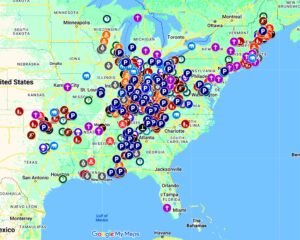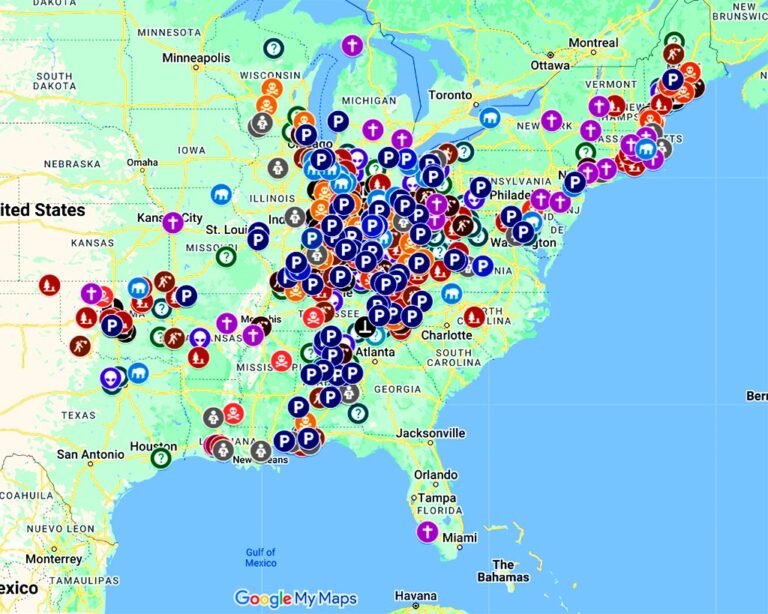What’s at the core?
The housing market is a complex ecosystem where the forces of supply and demand converge, determining the availability, affordability, and accessibility of housing for individuals, families, and communities. This intricate framework is shaped by a myriad of factors, including population growth, economic trends, interest rates, construction costs, government policies, and even the allure of that perfect backyard barbecue (more on that later!).
Ever dreamt of owning your own slice of the American dream—a cozy bungalow, a modern condo, or a sprawling farmhouse with a wraparound porch? The quest for homeownership is deeply ingrained in our culture, but for many, that dream feels increasingly out of reach.
The housing market in America is like a giant game of musical chairs—with more players than seats, and the music seems to be playing faster than ever. It’s a dynamic, often unpredictable, landscape where prices soar, bidding wars erupt, and finding that perfect home feels like searching for a unicorn in a haystack.
Did you know?
The median home price in the United States has increased by over 40% in the past decade? [Source: National Association of Realtors (NAR)] This meteoric rise in prices has left many aspiring homeowners feeling priced out of the market, forced to rent or delay their homeownership dreams.
But here’s the twist—this story isn’t just about numbers. It’s about the real people impacted by the ebb and flow of the housing market, the families struggling to find affordable housing, the communities grappling with rising rents, and the sense of uncertainty hanging over the future of homeownership.
This article explores the fascinating, sometimes frustrating, world of the American housing market, examining the forces driving supply and demand, analyzing the factors that influence affordability, and offering insights into the challenges and opportunities ahead. We’ll dive into demographics, economics, zoning laws, and even the emotional allure of homeownership, providing you with the tools to navigate this complex landscape with a little more clarity (and maybe even a dash of optimism!).
The American housing market, currently experiencing a period of tight supply and surging demand, is poised for a period of adjustment and recalibration in the coming years, as shifting demographics, evolving economic conditions, and policy decisions shape the landscape of affordability, availability, and accessibility to housing across the nation.
Decoding Demand: The Driving Forces Behind America’s Housing Hunger
Why are so many people clamoring for homes? The answer is multifaceted, intertwined with demographics, economics, social trends, and even the psychology of the American dream.
- Millennial Madness: Millennials, the largest generation in American history, are entering their prime homebuying years, creating a surge in demand for housing, especially in urban areas and suburban communities with desirable amenities and strong job markets. [Source: Pew Research Center]
- Remote Work Revolution: The rise of remote work, accelerated by the COVID-19 pandemic, has led to increased housing demand in suburban areas, exurban communities, and even vacation destinations, as workers seek more space, affordability, and a change of scenery. [Source: National Association of Home Builders (NAHB)]
- The Allure of Homeownership: Homeownership isn’t just about bricks and mortar; it’s a symbol of stability, financial security, and the American dream. This emotional pull drives demand for housing, even in the face of rising prices and economic uncertainty. [Source: The New York Times]
- Interest Rates Dance: When interest rates are low, borrowing money becomes cheaper, boosting demand for housing as monthly mortgage payments become more affordable. Conversely, rising interest rates can dampen demand as borrowing costs rise. [Source: Freddie Mac]
- The Echo of Economic Growth: A strong economy, characterized by job creation, rising wages, and consumer confidence, tends to boost demand for housing, as people feel more secure in their financial future and are more likely to make major purchases like homes. [Source: The Wall Street Journal]
- Investment Frenzy: Housing is often seen as a sound investment, especially during times of economic uncertainty. Investors, seeking stable returns and potential appreciation, can contribute to increased demand in certain markets, pushing up prices and creating competition for homebuyers. [Source: Realtor.com]
- Population Growth: Natural population growth, immigration, and household formation (the creation of new households) all contribute to housing demand, putting pressure on existing housing stock and driving the need for new construction. [Source: U.S. Census Bureau]
The Supply Squeeze: Why is Housing Scarce in the Land of Plenty?
The United States, a vast nation with ample land, is facing a housing shortage. How can that be? The answer lies in a tangled web of challenges that constrain housing supply, from zoning regulations to labor shortages and the rising costs of construction.
- Zoning Restrictions and Regulatory Hurdles: Local zoning ordinances, often designed to preserve community character or limit development, can restrict the construction of new housing, especially multi-family units and affordable housing options. [Source: Brookings Institution]
- The Construction Conundrum: The construction industry is grappling with labor shortages, rising material costs, and supply chain disruptions, making it challenging and expensive to build new homes, especially at a pace that keeps up with growing demand. [Source: Associated General Contractors of America (AGC)]
- The “Not in My Backyard” (NIMBY) Effect: Community opposition to new development, often rooted in concerns about traffic, density, or perceived changes to neighborhood character, can create roadblocks for housing construction projects. [Source: The Atlantic]
- Land Availability and Environmental Constraints: The availability of suitable land for development, especially in desirable locations, is a limiting factor. Environmental regulations and concerns, while crucial for protecting natural resources, can also create constraints for housing development in some areas. [Source: Environmental Protection Agency (EPA)]
- The Shadow of the Housing Crisis: The 2008 housing crisis left a legacy of foreclosures and distressed properties, contributing to a slow recovery in the housing market and lingering caution among developers and lenders. [Source: The Federal Reserve]
- Infrastructure Constraints: A lack of adequate infrastructure, such as roads, water systems, and schools, can hinder housing development in some areas.
- Government Policies: Government policies, such as tax incentives or subsidies, can either encourage or discourage housing construction. The complexity and sometimes conflicting nature of these policies can create challenges for developers. [Source: Urban Institute]
The Affordability Equation: Decoding the Rising Costs of Housing
The escalating costs of housing are a major concern, impacting affordability and accessibility for millions of Americans. Let’s examine the forces driving this affordability crisis:
- The Supply and Demand Tug-of-War: When demand for housing outpaces supply, as it currently does in many markets across the nation, prices tend to rise.
- Rising Construction Costs: The costs of labor, materials, and land acquisition have all increased, making it more expensive to build new homes and adding to the overall cost of housing. [Source: National Association of Home Builders (NAHB)]
- Interest Rate Hikes: As interest rates rise, the cost of borrowing money increases, making monthly mortgage payments more expensive and potentially pricing some buyers out of the market.
- Property Taxes and Fees: Property taxes, homeowners insurance, and other associated fees add to the overall cost of owning a home. These costs can vary significantly across states and localities, impacting affordability.
- Location, Location, Location!: Desirable locations with strong job markets, good schools, and amenities tend to command higher housing prices. Coastal cities, tech hubs, and areas with limited developable land often experience the steepest price increases. [Source: Zillow]
Unique Challenges
- Addressing Affordability: Finding ways to make housing more affordable for all Americans is a critical challenge, requiring a multifaceted approach that includes increasing the supply of affordable housing, promoting innovative financing models, and supporting homeownership programs for first-time buyers.
- Promoting Equitable Access: Addressing systemic inequities that create disparities in housing access, particularly for racial and ethnic minorities, low-income families, and individuals with disabilities, is a crucial challenge. This requires promoting fair housing policies, combating discrimination, and addressing social determinants of health that contribute to housing instability.
- Balancing Growth and Sustainability: Finding a balance between promoting economic growth and job creation while ensuring sustainable and equitable development is a delicate balancing act. This involves addressing environmental concerns, preserving community character, and planning for future population growth and housing needs.
- The Missing “Middle” Housing: The housing market often lacks “missing middle” housing options, such as duplexes, triplexes, townhomes, and smaller apartment buildings, that provide more affordability and density than single-family homes. Zoning reforms and incentives can help promote the development of these types of housing. [Source: Urban Land Institute]
What next?
The American housing market, like a complex puzzle, is constantly evolving, responding to shifting demographics, economic forces, and the desires of individuals and families seeking that elusive “home sweet home.” Navigating this landscape requires understanding the intricate interplay of supply and demand, the challenges of affordability, and the social and economic implications of housing choices.
As we look towards 2025 and beyond, the housing market will continue to evolve, responding to demographic shifts, technological advancements, evolving workplace trends, and the ever-present challenge of affordability.
The choices we make—as individuals, policymakers, community members, and a society—will shape the future of housing in America. Let’s embrace innovation, advocate for equitable access, and work together to ensure that the American dream of homeownership remains within reach for all.
Key Takeaways
- The American housing market is currently experiencing a period of tight supply, robust demand, and rising prices, creating affordability challenges for many potential buyers.
- Factors such as demographics, interest rates, economic conditions, construction costs, and government policies all play a role in shaping the dynamics of the housing market.
- Addressing the affordability crisis requires a comprehensive approach that includes increasing the supply of housing, particularly affordable housing options, promoting innovation in financing models, and tackling the root causes of poverty and inequality.
- Balancing the need for new housing development with environmental concerns, preserving community character, and ensuring equitable access to housing for all Americans are crucial considerations.




















+ There are no comments
Add yours